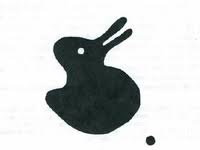BriefConsulting 2.3: Is-ness As Usual

Poison tell? I call ‘Is’ the poison tell because it tends to materially misrepresent experience while fully satisfying the ear. I can say, “It ‘is’ cold outside,” when I really mean, “It feels cold outside” or, “It looks cold outside.” Outside ‘isn’t’ cold. A dictionary might define cold as a class of temperature positioned somewhere South of cool and well North of ‘my ass just fell off.’ No dictionary defines cold as ‘outside.’ Yet language comfortably tolerates this indiscretion. Only two letters. One insidious word.
My example might trivialize my point. I hate playing the grammar police, but the Brief Consultant in me insists. ‘Is’ encourages a deep disconnection, I call this Is-ness As Usual, where a simple identity function quietly replaces individual experience. I can declare that it ‘is’ cold outside without ever disclosing my experience. Did I feel the cold, or see snow, or just notice someone walking by wearing mukluks? See how much information remains hidden behind those two innocent letters, that one insidious word?
I view ‘is’ as in invitation. I can step into the glaring hole that perhaps only I see in that moment, then ask. The resulting conversation might well frustrate the mukluks off my client at first, while also helping me and my client understand what my client was really trying to say. I swear, familiarity breeds much worse than contempt. It breeds a complacency in our descriptions. I lose precision, thinking myself somehow more efficient, perhaps, or succinct, when I might well be weaving a trance of understanding, leaving us both with the clear conviction that we actually communicated, when we clearly did not.
Is-ness As Usual never waves red flags, begging to be recognized. It needs a patient ear to hear it screaming, but it does scream once my ear becomes tuned to its frequency. ‘Is’ becomes habitual, like ‘secretly’ nibbling one’s nails. A very public secret easily missed and just as easily amplified.
Like the duckrabbit pictured above, no experience simply ‘is.’ Viewed from one perspective, this ink blot certainly ‘resembles’ a duck. From another, a rabbit, but it might be best described as an ambiguous ink blot which one might easily interpret as a picture of a duck or a representation of a rabbit. ‘Is’-less conversation can feel difficult, much as ‘is-less’ writing seems impossible. With practice, it becomes second nature, still requiring some second-guessing, but a quiet awareness that insists color, depth, and meaning.
Is-ness As Usual operates sublimely unaware of how it undermines purpose. The change agent who blithely asserts what is good and what is bad unwittingly sabotages his best intentions. He might more productively speak of appearances than identity. He could more usefully characterize his objectives by declaring what he wants rather than how things ‘is,’ or really should ‘be.’
The Brief Consultant’s magic often involves nothing more mysterious than heightening his client’s awareness of his preconscious omissions and thereby reconnecting him to his physical experience. Seeing ‘Is’ for what it never could be, might be all the unsticking anyone suffering from Is-ness As Usual ever needs.
©2012 by David A. Schmaltz - all rights reserved


